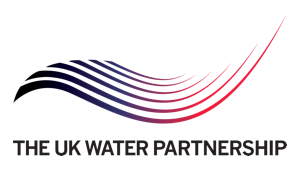The challenge
As a contribution to improving the local environment Coca Cola wanted to restore a degraded stretch of river near it bottling plant in south east London. In addition to removing unsightly rubbish, the restoration must be sustainable, being resilient to both flood and drought events, and it must re-establish native ecosystems that are consistent with the local area.
The solution
A partnership between the World Wildlife Fund (WWF) and the NERC Centre for Ecology & Hydrology involved the application of wide range of expertise covering both environmental and social sciences. Using the latest knowledge of river behaviour a model had to be created of how the restored river would function, a plan outlining each step in the restoration process, and the likely maintenance requirements after restoration was completed.
The work involved study of stream flow rates, water chemistry and the natural of the upstream headwaters, the gradient, stream bed, channel banks and flood plain – as well as the existing and future plant and animal ecosystems that needed to established. Hydraulic modelling of small scale river flow rates, channel geometry, bed sediment, plant growth and ecology assisted in designing and testing of the best design options. One feature of the design was the use of the restored river to reduce flood risk by designing in flood storage within the flood plain that was consistent with local residents aspirations and safety concerns.
Local community was involved in discussions from the very earliest discussion – and provided valuable insights into historical river behaviour and feedback on the usefulness of different landscape design options.
Resulting benefits
The local community now have a new area where they can relax and enjoy pleasant scenery. In addition to fostering greater pride in their local community, the project has fostered community involvement in the long term management of the new river and park land.
The company has been able to respond and address an issue of local concern to its employees and neighbours. The project has strengthened the company’s capability to undertake long term CSR collaborate with the local community on other issues of concern. The collaboration with the WWF enable the transfer of recent research from CEH to WWF, and CEH hydro-ecologists to learn from working with WWF the social experts.
Future directions
The “localism” agenda is encouraging many similar initiatives between the private sector and local communities, with the Defra/EA Catchment based approach providing further impetus to local river restoration projects. New decision support tools are likely to be built which will empower people without specialist expertise to assess, plan and manage river restoration projects.
Review of river restoration motives and objectives
The London Rivers Action Plan – a tool to help restore rivers for people and nature
Environment Agency – River Restoration Internet Toolkit (Phase 1 Scoping) 2002
Training Courses - The River Restoration Centre
Video - YouTube
Customer:



Sources of funding
EU FP7 WISER Water Bodies in Europe – Integrative systems to assess ecological status and recovery









































 The Water Security Knowledge Exchange Portal supports the objectives of the
The Water Security Knowledge Exchange Portal supports the objectives of the 